|
James Bay Shorebird Project 2018
Longridge Point from 31 July to 13 August - Page 4 of 10 |
|
|
|
Banding Research
with Ross Wood |
|
 |
|
A new international research project
involves tracking Lesser Yellowlegs, whose population has declined
markedly in recent years. Hunting mortality on the wintering grounds
is a serious threat, along with other factors. Juvenile Lesser
Yellowlegs on 6 August 2018. |
|
|
|
 |
|
The James Bay Project received 9
satellite transmitters to place on adult Lesser Yellowlegs to help
researchers know their migratory routes, wintering areas, survival
and their genetic differences. The transmitters are expensive
(around $4000 each) and are affixed to adults not juveniles because
mortality is high in the first year of life. Molting adult Lesser
Yellowlegs on 12 August 2018. |
|
|
|
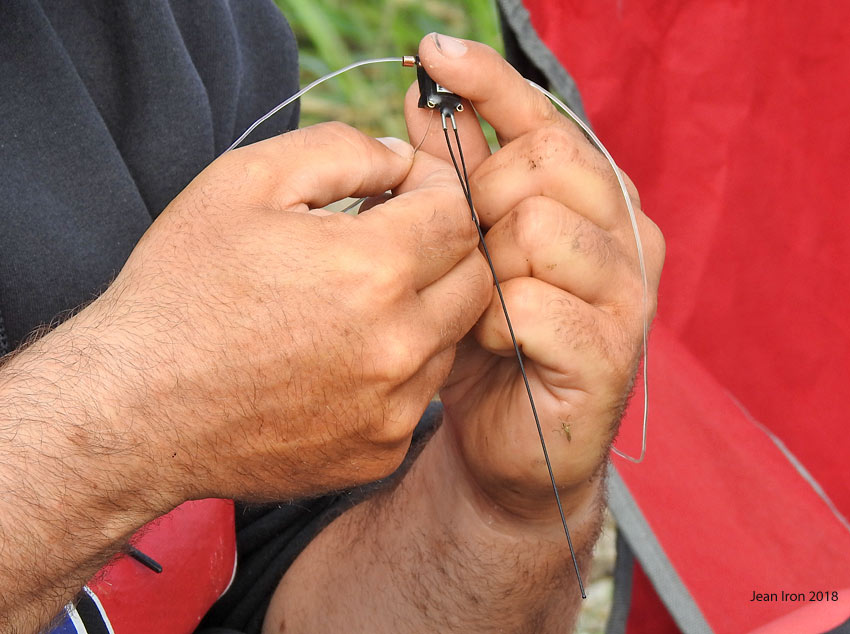 |
|
The transmitter with
an antenna is very light and the adult has to weigh at least 80 g. |
|
|
|
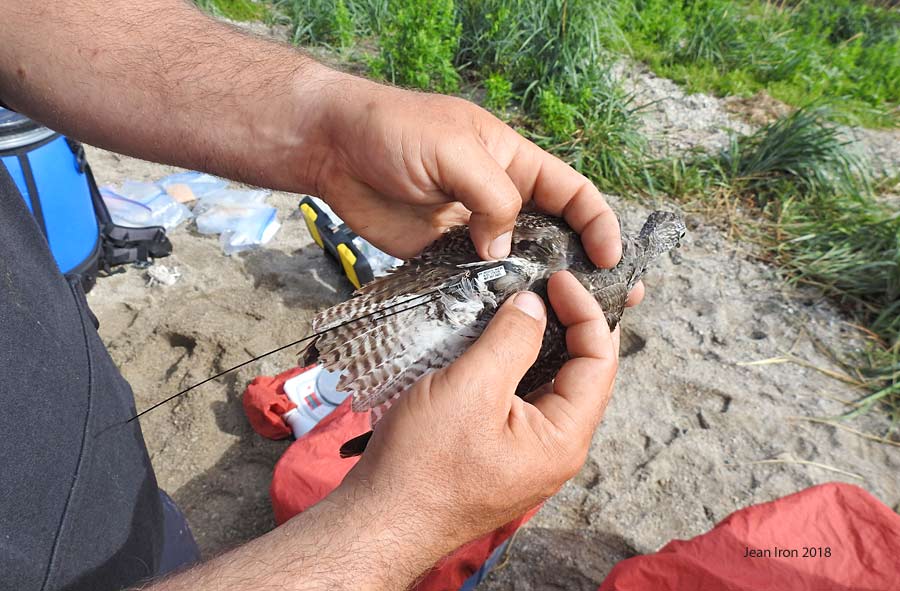 |
|
The transmitter has a
harness and is affixed to the bird's back. |
|
|
|
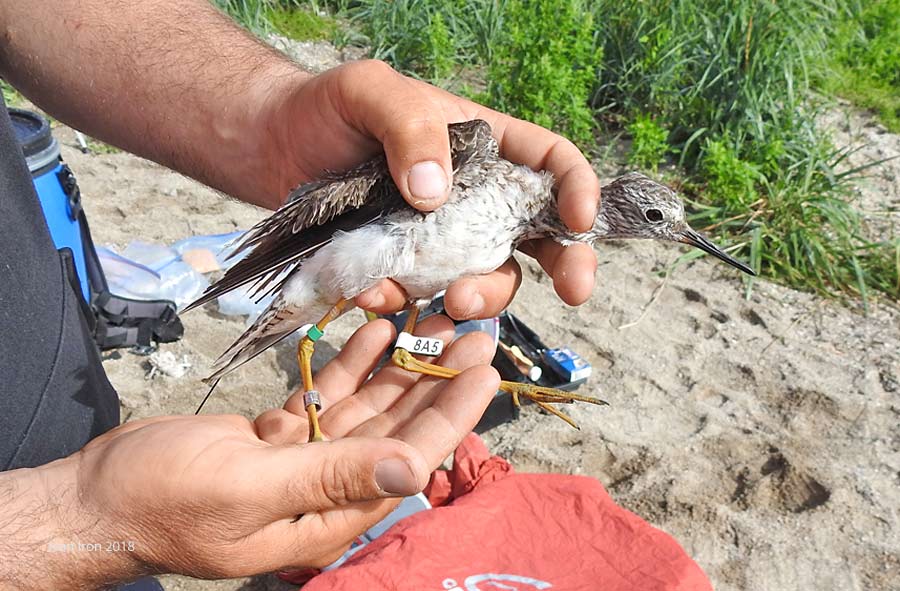 |
|
The Lesser Yellowlegs receives a unique
white flag for Canada, a metal band with a unique number, and a
green band for James Bay. Blood and feather samples were taken for
sexing and isotope analysis. 9 August 2018. |
|
|
|
 |
|
This juvenile Lesser Yellowlegs also
receives a unique white flag and metal band and a green band for
James Bay. blood and feather samples are taken but it does not
receive a transmitter. 6 August 2018. Most of the yellowlegs at this
time are juveniles as most adults have migrated. |
|
|
|
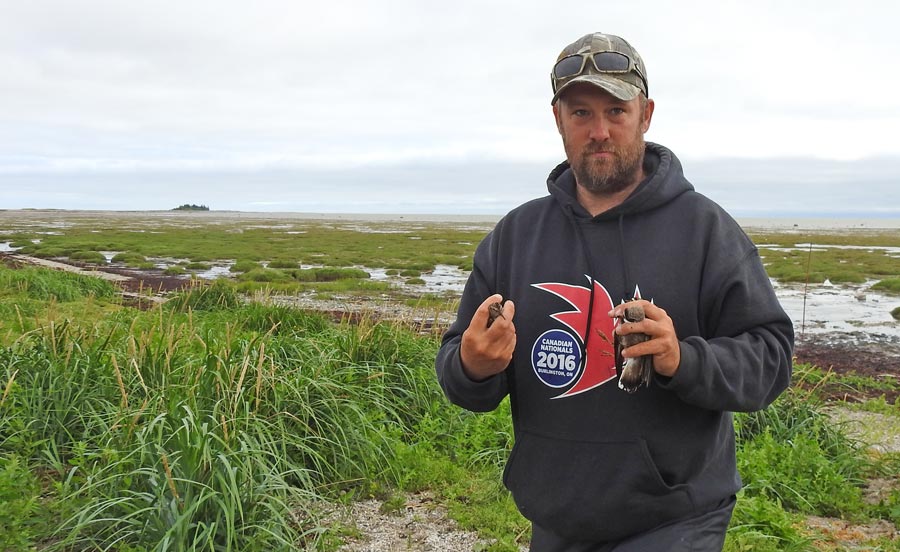 |
|
On several days I assisted Ross Wood
with banding, and was impressed with the amount of physical work and
precision involved. I learned a lot. Ross has just taken these birds
out out of the nets. They were extracted right away. 9 August 2018. |
|
|
|
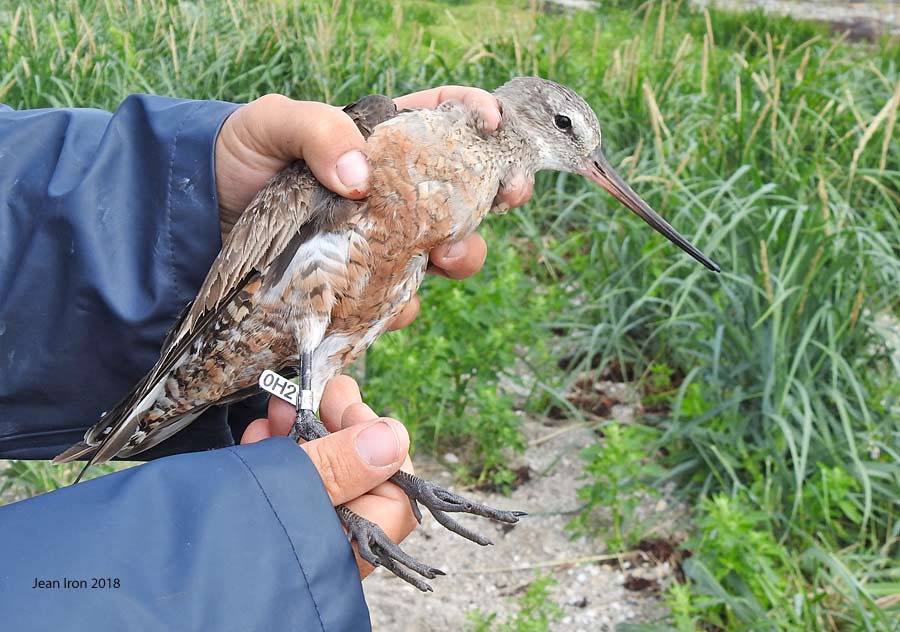 |
|
On 6 August 2018, the first Hudsonian
Godwit for the project, OH2, was banded and flagged. In total, Ross
flagged 4 Hudsonian Godwits: OH2, OH3, OH4 and OH5. James Bay is a
major staging area for the eastern North American population of Hudsonian Godwits
breeding around Hudson Bay. They fatten here and molt, and most
will fly nonstop to South America. Ontario's large breeding
population nests on the Hudson Bay coast. We have a big
responsibility for their conservation. |
|
|
|
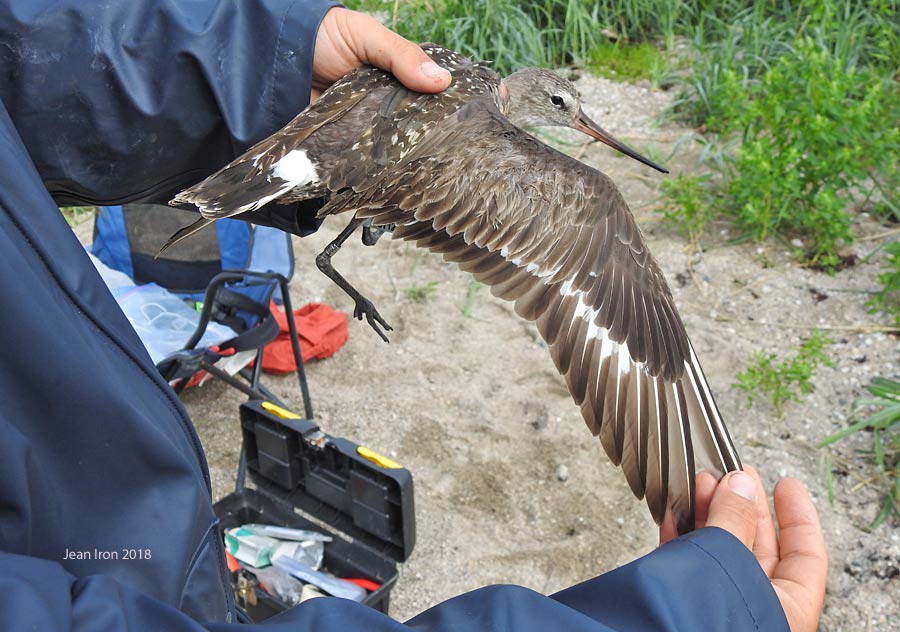 |
|
OH2 spread wing showing the white
flash and white rump. 6 August 2018. |
|
|
|
 |
|
OH3 was the second
Hudsonian Godwit to be flagged |
|
|
|
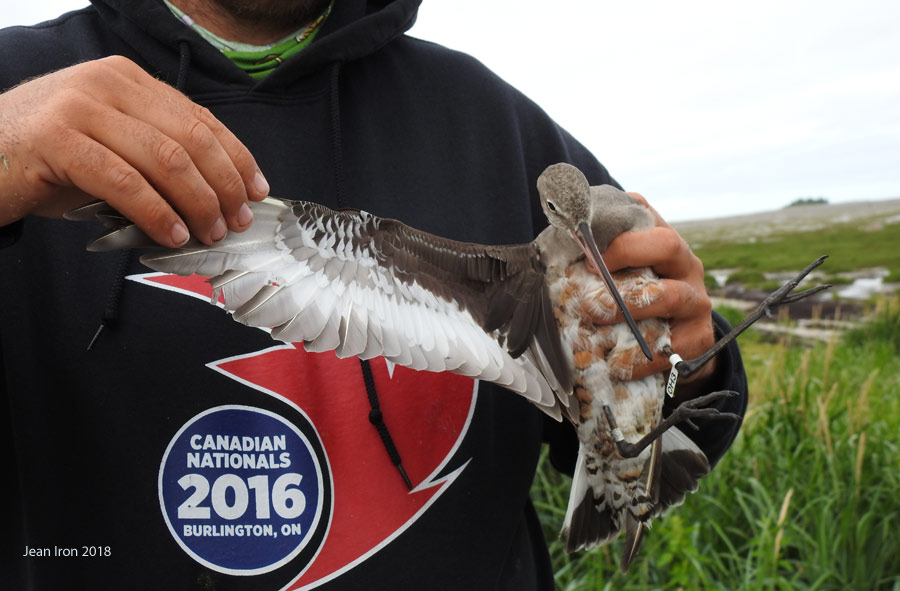 |
|
Ross holding OH3 to
show the dark axillars on 6 August 2018. |
|
|
|
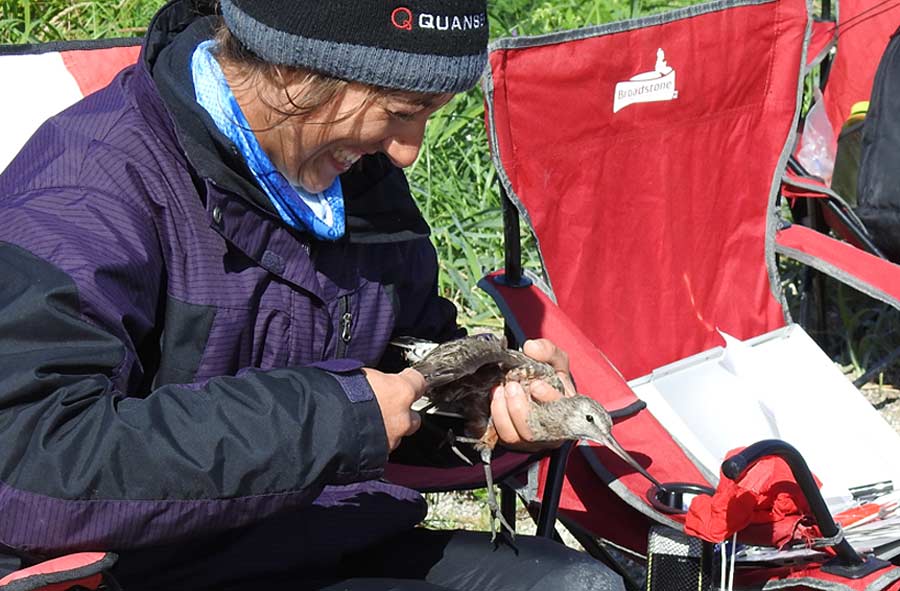 |
|
Isabel banded
Hudsonian Godwit OH4 on 9 August 2018. |
|
|
|
Now go to page 5 -
Shorebird & Yellow Rail Banding |
|
|
|
|
|
|